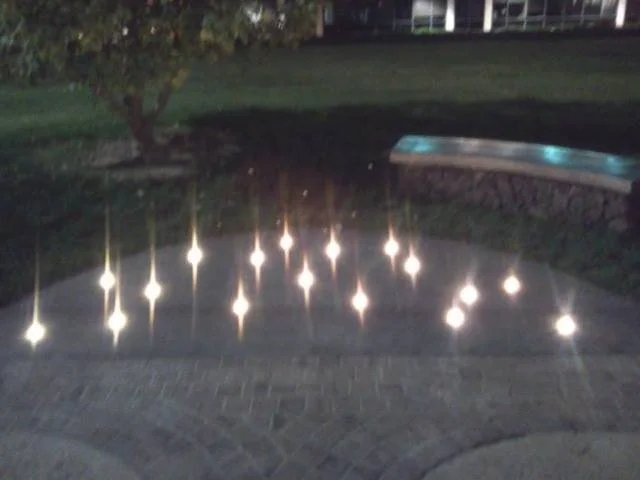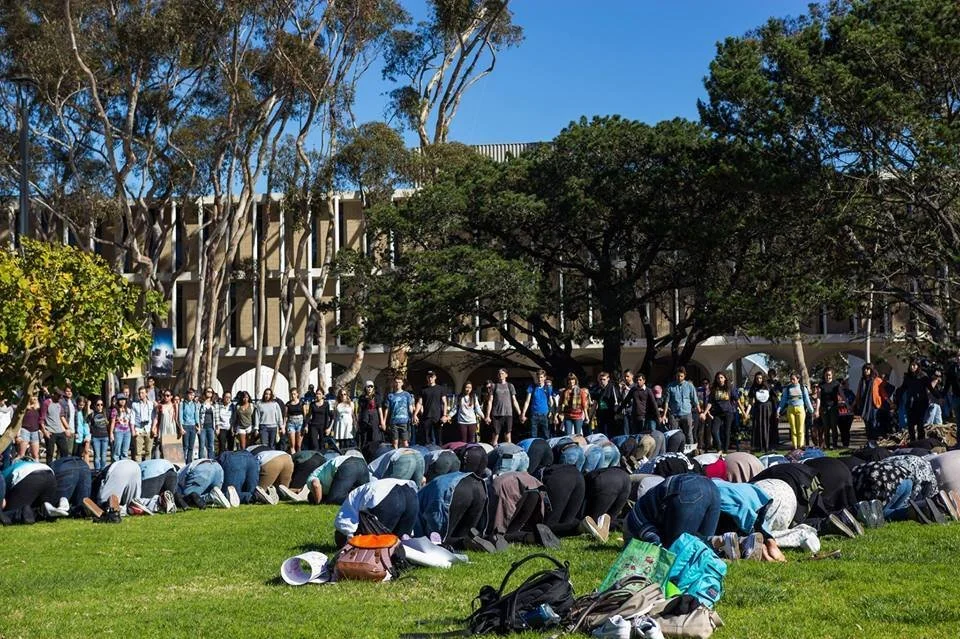Secrets of the Fire
By Niall Twohig
The May 1970 Peace Memorial (UC San Diego Revelle Plaza)
For the Dimensions of Culture students
and its former directors: Jorge Mariscal and Jeff Gagnon
Let’s begin with the bare facts: On May 10, 1970 George Winne Jr. stepped into Revelle Plaza. He held a sign that read “In God’s Name End the War.” Winne doused himself with gasoline, lit a match, and burst into flames. Students saw the burning man from a nearby building. They ran to him, beat out the flames. Winne was badly burnt. He died the next day.
Such facts can be deceiving. They only show the surface of reality. When we focus on the surface, we risk losing sight of the historical context surrounding Winne’s self-immolation. We also miss more profound secrets. I write now to whisper some of these secrets to you, so that you may whisper them to others
* * *
When I first heard of Winne, I was vexed. I wanted to know what was behind the facts of his self-immolation. I presented the story to my students each year, hoping our discussions would shed some light on it. My students were captivated by the history, yet our discussions ground to a halt in the same way. “I get why he was upset,” a student would say, “but it’s no reason to commit suicide.” A second student would add, “He was probably depressed.” Curiously enough, these students were inspired by various forms of civil disobedience we studied in class. Yet, with the self-immolation, their imaginations hit a wall.
I could understand why. The pain Winne inflicted upon his body — the grotesque outcome — confounds us. We ask why. To answer that question, we latch on to familiar concepts and classifications. Those of us whose “reality” has been shaped by liberal thought and Western psychology cordon off Winne’s suffering by classifying it in individualistic terms. We might treat him as a mentally ill loner or deviant who broke the most sacrosanct law of our secular world: thou shalt not take life, not even one’s own. I always felt such approaches missed something important about Winne’s act, something that called into question the very categories used to order and divide a world that is far more messy, far more indivisible.
I did not want to pinpoint that something. It was easier to move on to other topics. Yet, I never escaped the gravity of Winne’s self-immolation. It pulled me back. At times, it seemed a black hole, pulling me into a void of conflicting opinions that led nowhere. More often, I felt the self-immolation was a supernova, an explosive light I couldn’t get my hands on. I don’t mean this as metaphor. I saw it. I recall watching a scene from Richard Linklater’s Waking Life where a man sits in a lotus position and sets himself ablaze. When I saw this scene, my imagination played tricks on me, or perhaps, it showed me a deeper reality. In my vision, the burnt man became manifold and exploded off the screen. When I closed my eyes, I saw the burnt figures lit as a billion suns. Their incandescent flames licked and flickered in my eyes. Their silent tongues held a secret. How could I possibly write of such things, such secrets of the fire?
The afterimage stayed with me. It became a constellation guiding my search, guiding my hand as I wrote. I started with the archive. Combing through old newspapers, I came across views of Winne similar to the ones expressed by students: a sick young man, a depressed loner, a suicide. I also encountered views from the political Left and Right that cast Winne as a Leftist martyr or victim of Leftist ideology. For both sides, the strategy was the same: Winne had become a pawn in their game of us versus them. None of these views seemed adequate, so I kept looking for something I wasn’t sure was there.
I found it in a single photograph, not of Winne, but of a nonviolent protest that occurred at UCSD a week before Winne’s self-immolation. This photo shows a group of students occupying Urey Hall, their backs to the camera, their hands held up in gestures of solidarity and peace. If we know our local history, we know why they are there. They are occupying labs that, at the time, are conducting war research for the C.I.A. If we know our national and global history, we know these students are not alone, but are part of the largest student strike in U.S. history. Millions more across the world stand with them. They stand against a war machine that rains hellfire on the wretched and poor of the earth, that deploys young men to fight and die for rich men’s material and ideological interests, and that turns its bullets and bayonets on peaceful protesters.
The Indicator (UC San Diego) May 1970 Issue
What drew me to this photo, though, was not the historical facts surrounding it. It was something else in the photo that no words can capture — not mine, not yours, not even the words of the protesters. Like a star, the photograph crystallizes the light of the past. It freezes history and presents us with a gesture not-yet-touched by words, not-yet-tainted by ideology. In that gesture we see a moment of radical empathy, a moment when the students put aside the masks of the “self” to stand with the suffering “other.”
I think we would be gravely mistaken to write off their frozen gesture as trivial or naïvely utopian. We might instead see how it momentarily touches the deeper reality described by Martin Luther King Jr. and other prophets of nonviolence who remind us that we are, at the deepest level of reality, interdependent. It may not appear this way. From our limited perspectives, we appear to be individuals standing on our own two feet, willing our way through the world. Yet, if we look deeper, we see that we are an ephemeral part of a continuum where each individual form is inexorably bound to, and dependent upon, all that exists beyond its visible boundaries and borders. We are, as King says, “tied together in a single garment of destiny.”
* * *
Though Winne is often remembered as one who stood apart from the crowd, I see his kinship with these students in the photo. They touched the same reality, felt themselves a part of the collective fabric. There is, of course, an important difference between the two gestures. The gesture in the photo had to come to an end. These students had to move on. They had to return to themselves, their lives, the flow of history. Winne never returns. We might see this absolute departure as a sad fact, or we might see it beyond the facts. If we take the latter view, we see that his gesture never comes to an end. It eternally points toward our truest enemies — hatred, greed, division, and violence — and to the boundless love that motivates nonviolent action.
When we see Winne in this light, we move beyond those shortsighted and doctrinal classifications that cast him and others like him as sick individuals clouded by depression or anger. We see them in a clearer light, as enlightened beings who illuminate the hidden secrets of reality. In silent tongues of fire, they whisper that secret to us, telling us that the boundaries that divide us are false, that the joys and sorrows of one are the joys and sorrows of all. They whisper this secret to us so that we can take up their undying fire, the fire of peace.
* * *
The defenders of the old order do not want us to whisper these secrets to one another. They fear losing their grip on a constructed and inequitable social order. They desperately hold onto their “reality” by building physical and ideological walls between “us” and “them.” They invest in our separation so that they can continue to wage wars motivated by greed. They set us apart so that they can continue to revel in the material gains of a system that is leading our planet, and the most vulnerable populations, to a fast extinction.
Curtis Yee for The Triton
A recent photograph reminded me that the students will not accept this divided world as their reality. Shortly after Trump signed Executive Order 13769, more aptly called The Muslim Ban, students filled Revelle Plaza. In this photo, the Muslim students are at prayer in the green of the lawn, not far from where Winne lit himself on fire. Their fellow students — their brothers and sisters — interlock their arms to form a protective ring around them. In the light of this photo, we see the face of God as Winne may have seen it: in a people who realize their indivisibility. Therein lies the fire that will cut through the darkness.
Originally published in The Triton


